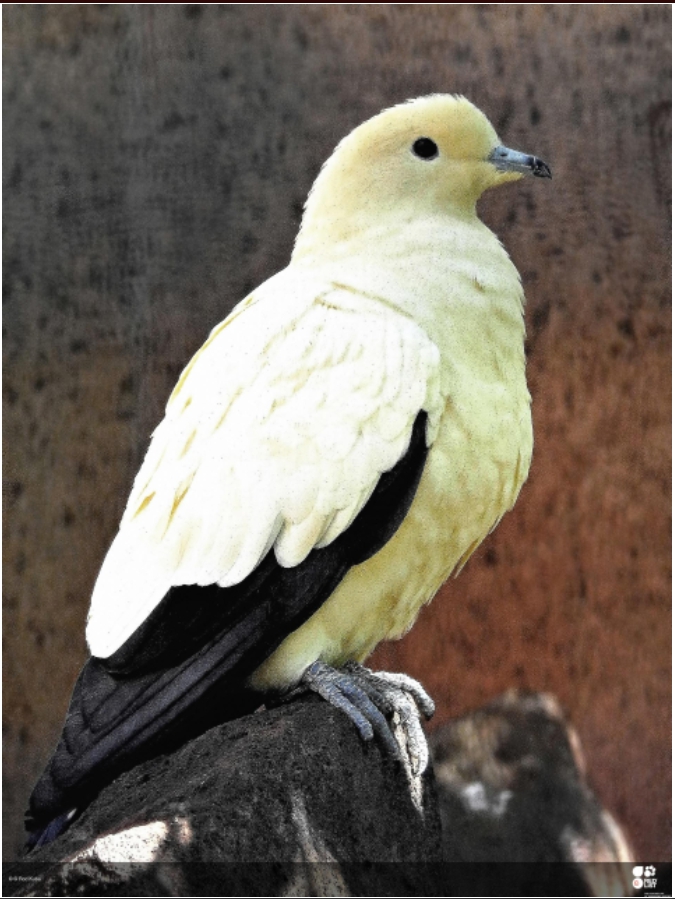| Taxon ID: 87,296 Total records: 39,143 | ||||||||||||||
Ducula bicolor
Country
| Country | Thailand |
|---|---|
| Continent Ocean | Asia |
Classification
| Kingdom | Animalia (COL) |
|---|---|
| Phylum | Chordata (COL) |
| Class | Aves (COL) |
| Order | Columbiformes (COL) |
| Family | Columbidae (COL) |
Taxonomy
| Genus | Ducula | Reference | |
|---|---|---|---|
| SubGenus | Vernacular Name | ||
| Species | bicolor | IUCN Threat Status-Year | Least Concern, 2021 |
| SubSpecies | Nat'l Threat Status-Year | Not Evaluated, 2022 | |
| Infraspecies | Reason for Change | ||
| Infraspecies Rank | CITES | ||
| Taxonomic Group | Birds | Native Status | Native |
| Scientific Name Author | (Scopoli, 1786) | Country Distribution | Thailand; |
| Citation | BirdLife International. 2021. Ducula bicolor. The IUCN Red List of Threatened Species 2021: e.T22691799A198132396. https://dx.doi.org/10.2305/IUCN.UK.2021-3.RLTS.T22691799A198132396.en. Accessed on 05 May 2022. Brinkman, J.J., van der Ven, W., Allen, D., Hutchinson, R., Jensen, A.E., Perez, C. (2021): Checklist of birds of the Philippines. Wild Bird Club of the Philippines. www.birdwatch.ph | Description | JUSTIFICATION This species has an extremely large range, and hence does not approach the thresholds for Vulnerable under the range size criterion (Extent of Occurrence <20,000 km2 combined with a declining or fluctuating range size, habitat extent/quality, or population size and a small number of locations or severe fragmentation). Despite the fact that the population trend appears to be decreasing, the decline is not believed to be sufficiently rapid to approach the thresholds for Vulnerable under the population trend criterion (>30% decline over ten years or three generations). The population size is very large, and hence does not approach the thresholds for Vulnerable under the population size criterion (<10,000 mature individuals with a continuing decline estimated to be >10% in ten years or three generations, or with a specified population structure). For these reasons the species is evaluated as Least Concern. RANGE DESCRIPTION Occurs from the Andaman and Nicobar Islands, India, and Myanmar, Thailand, Cambodia and Viet Nam throughout Malaysia, Brunei Darussalam, the Philippines and Indonesia as far east as the coastal margins of the Birds Head Peninsula and the Kai Islands. Usually found on small islands: movements are poorly known but noted to travel to relatively distant inland forested sites to feed before returning offshore to roost. DESCRIPTION There is no overall estimate of the population size of the species. It is common in coastal regions with small offshore islands, but there are few records of sizable flocks. The largest concentration concerns a count of 9,190 individuals roosting on Ursula Island in the Philippines on 5th May 1987 (Hornskov 1995). Large numbers occur on islands between Sumatra and Kalimantan including Bangka-Belitung and the Riau archipelago: 5,000 individuals were counted in February 2014 at a communal roost on Belitung Island (Iqbal 2016). While the species is patchily distributed, the population is believed to be large given the wide range and frequency of records. Trend Justification: The population is suspected to be in decline owing to ongoing habitat destruction and unsustainable levels of exploitation, though the majority of the population is not thought to be affected. HABITAT AND ECOLOGY Nests and roosts communally on rocky islets or cliffs near the sea, but in other parts of the range nests in mangroves and may use other trees elsewhere. Travels long-distances from offshore roosts in some areas to forage in forest or plantations inland. THREATS Excessive hunting is believed to be responsible for the patchy distribution and rarity of the species on Java and Bali and in parts of the Philippines (Baptista et al. 2020). USE AND TRADE Hunting occurs in various parts of the range, but is not monitored and there is no direct assessment of the impact on the population. The level of hunting is believed to be the cause of the rarity of the species on Java and Bali, and may have nearly extirpated the species from Mindoro and Negros in the Philippines (Baptista et al. 2020). |
| Source |
Record Level
| Date Last Modified | 2022-05-07 06:31:43 |
|---|---|
| Institution Code | ACBBISS-TH |
| Collection Code | 87289 |
| Catalog Number | ACBBISS-TH-87289 |
| Record URL | https://www.catalogueoflife.org/data/taxon/37Z97; https://www.iucnredlist.org/species/22691799/198132396 |
Growth Parameters
Collecting Event
Images
|
Additional Info
Synonyms To Manage Synonyms for Ducula bicolor, click this link: Synonyms. |
Ducula bicolor bicolor (Scopoli, 1786) |
Common Names To Manage Common Names for Ducula bicolor, click this link: Common Names. |
|
Localities To Manage Localities for Ducula bicolor, click this link: Localities. |
Species Record Details Encoded By:
Carlos Aurelio Callangan
|
Species Record Updated By:
Carlos Aurelio Callangan
|

